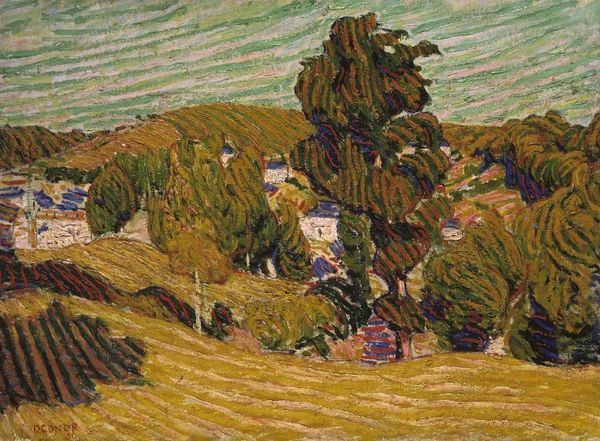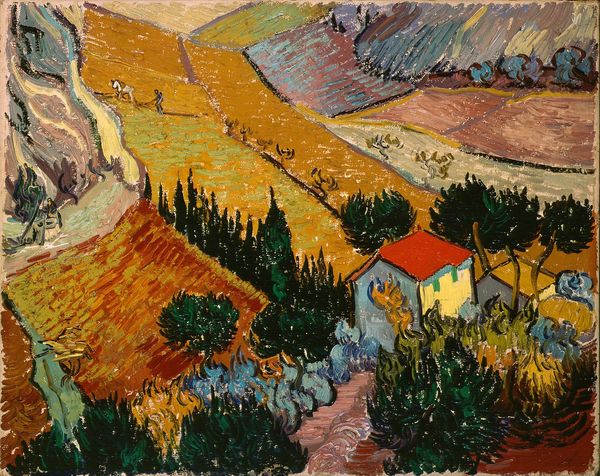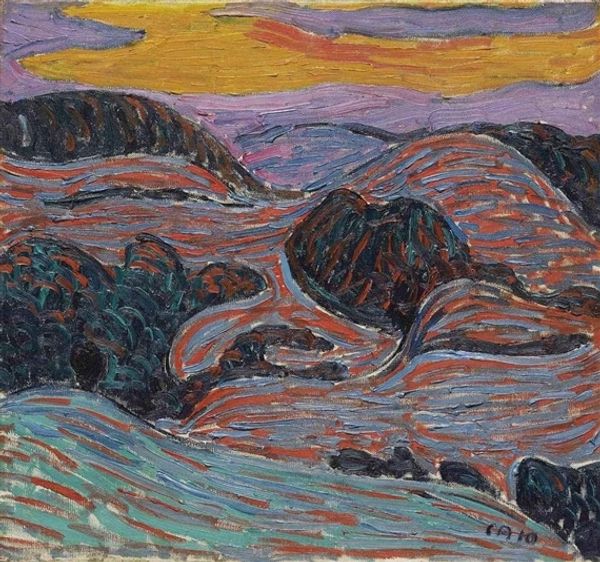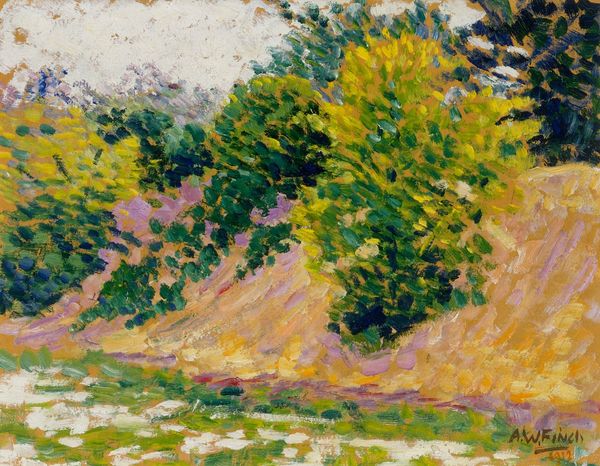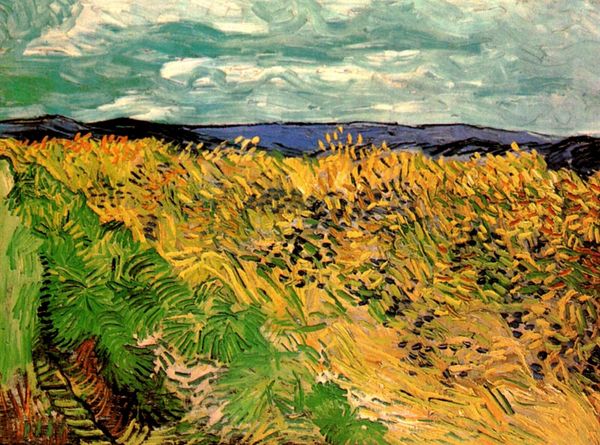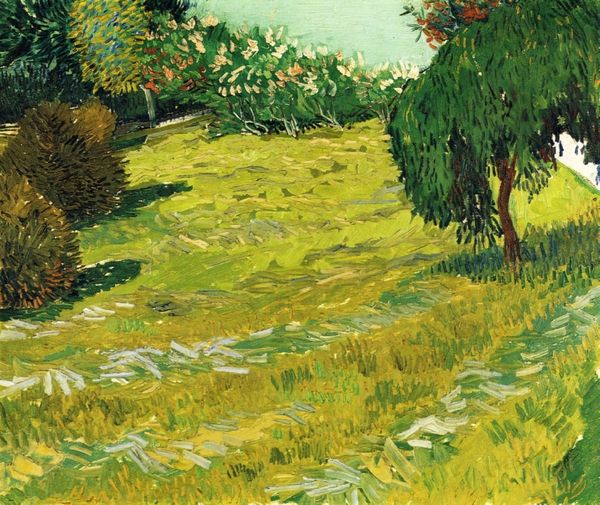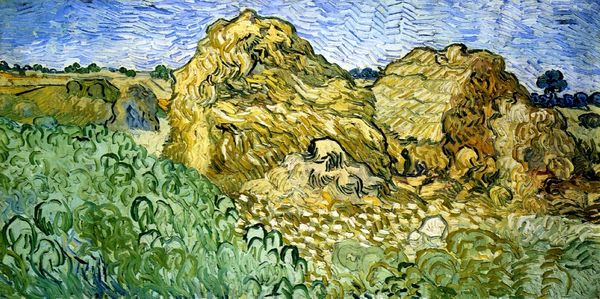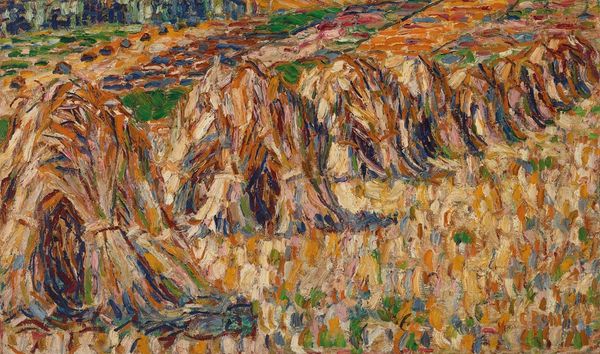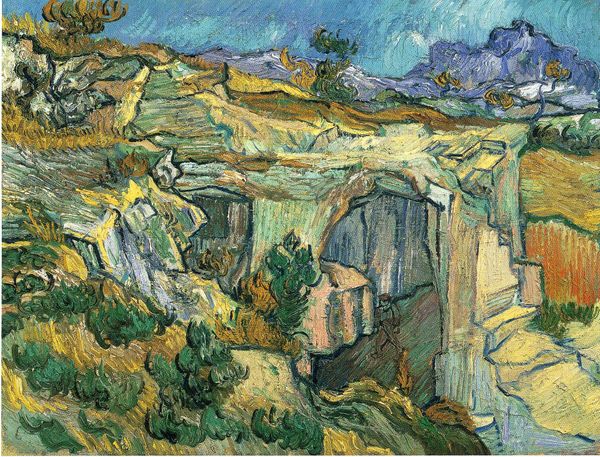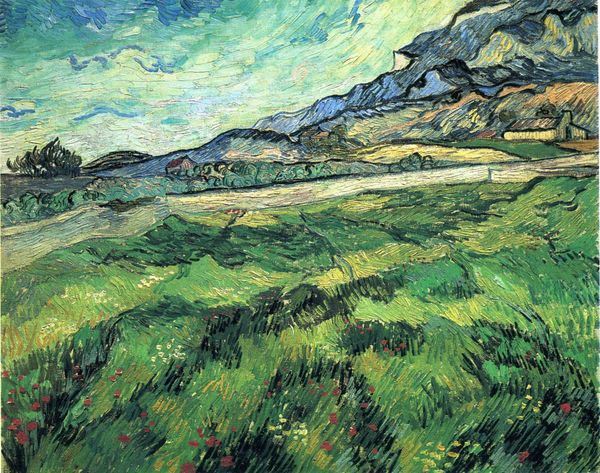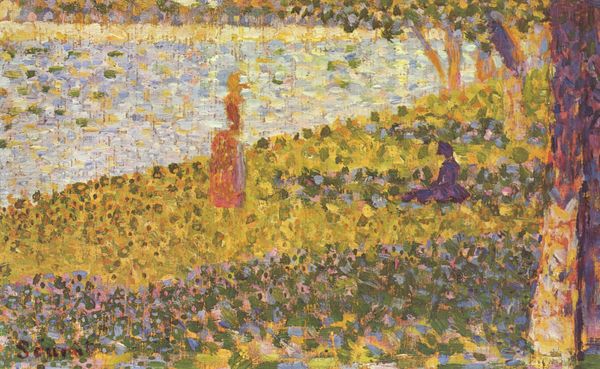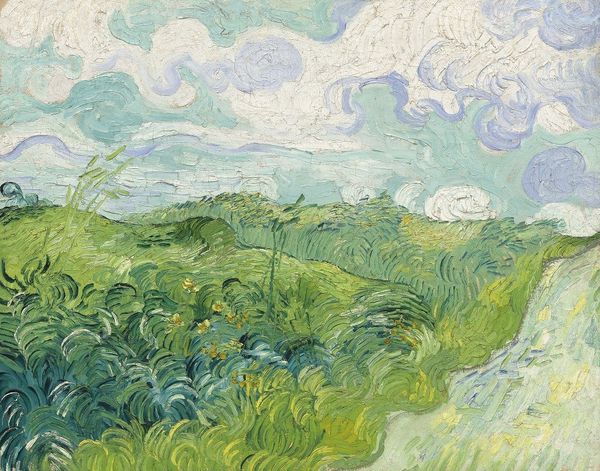
painting, plein-air, oil-paint, impasto
#
painting
#
plein-air
#
oil-paint
#
landscape
#
impressionist landscape
#
oil painting
#
impasto
#
expressionism
#
post-impressionism
#
expressionist
Dimensions: 38 x 38 cm
Copyright: Public domain
Curator: Roderic O'Conor's "Field of Corn, Pont Aven," painted in 1892, captures a landscape scene in vibrant oil paints with a notable impasto technique. What are your initial thoughts? Editor: Immediate sense of summery abundance, almost overwhelming. That textured field vibrates! You can feel the heat rising off the canvas. Curator: The materiality is certainly pronounced. O'Conor employs visible brushstrokes and a thick application of paint, typical of post-impressionist handling. Observe how the short, directional strokes articulate the form and texture of the cornfield. Editor: Right, those aren’t just brushstrokes; they're expressive marks. It feels almost more about conveying the experience of being *in* the cornfield than just representing it. And those dabs of blue and red amongst the green of the distant trees. He's not holding back! Curator: Precisely. We can discuss O'Conor’s interplay of colour, in reference to theories developing at the time, the relationships between, say, the saturated yellow of the field and the muted blues of the sky—establishing spatial depth while also disrupting naturalistic colour associations. It adheres in some aspects but detours boldly. Editor: True. He's heightening reality, not copying it. It's interesting how the foreground, with its almost aggressive texture, leads to a much calmer horizon line. Kind of a visual push and pull, yeah? What's with the smattering of colour near the bottom edge? Wildflowers, or something else? Curator: A visual accent, perhaps? An emphatic conclusion to the field's energy? He invites us, perhaps, into its symbolic core? These touches of colour seem almost emotionally symbolic within his semiotic intent. Editor: Semiotic, always with the long words! Look, to me, the painting speaks more simply than all that! A day in the countryside, seen and felt through an ecstatic, and very talented, eye. What do you think he'd make of our discussion now? Curator: One may imagine that he would, given his avant-garde leaning, would delight in seeing interpretations develop almost 150 years from the time of painting, with discourses changing and the world also evolving. Editor: Perhaps, but I reckon he would have preferred just another sunny afternoon painting in that same field.
Comments
No comments
Be the first to comment and join the conversation on the ultimate creative platform.
